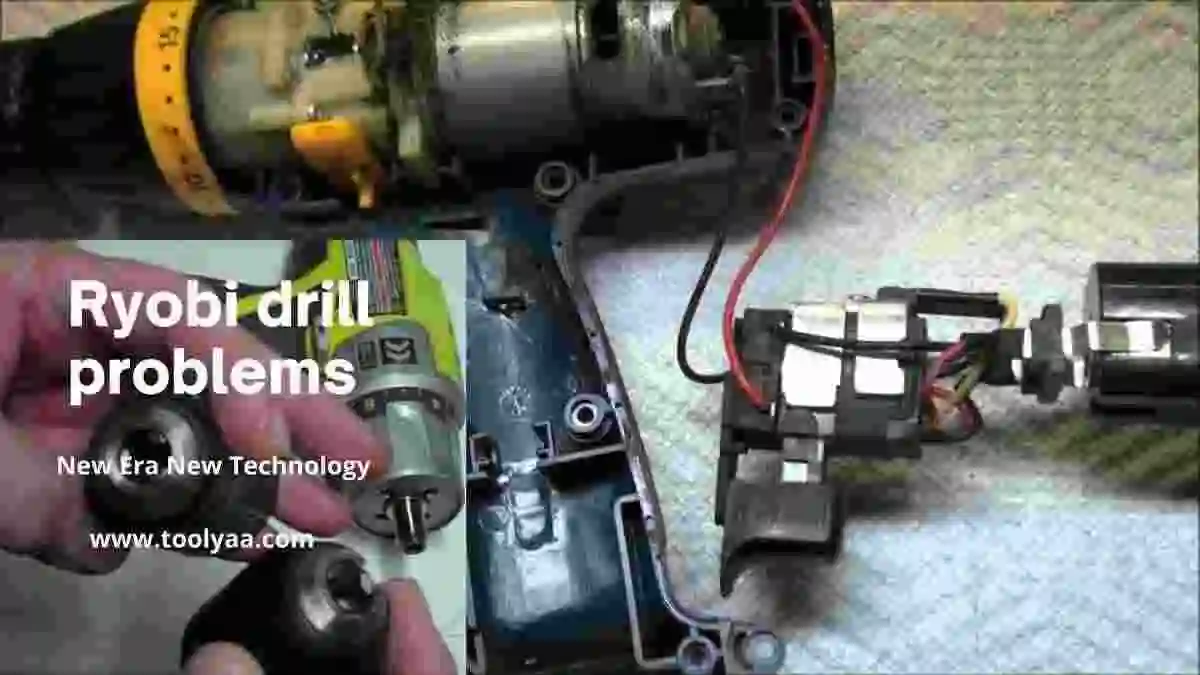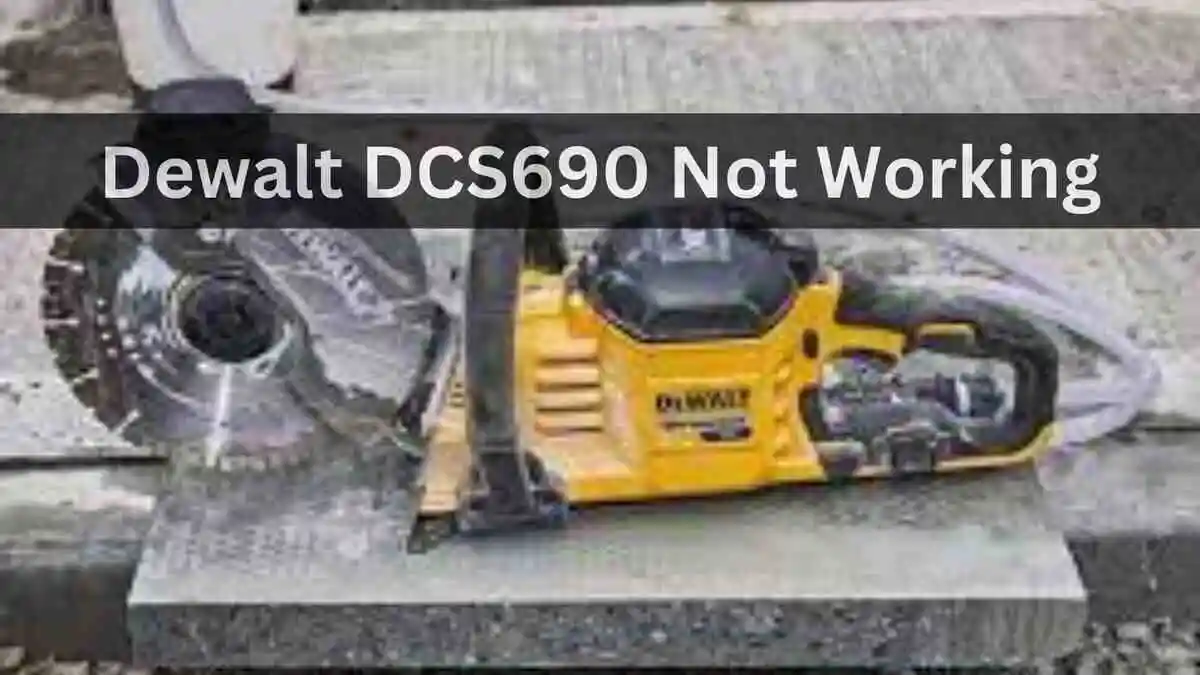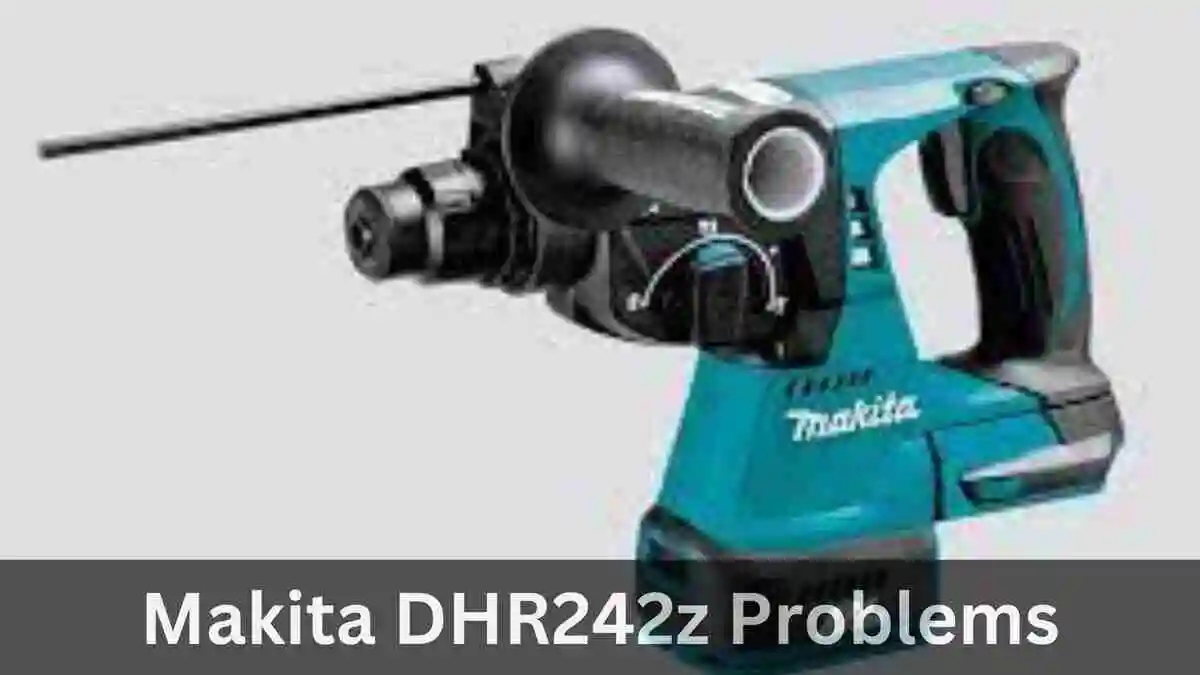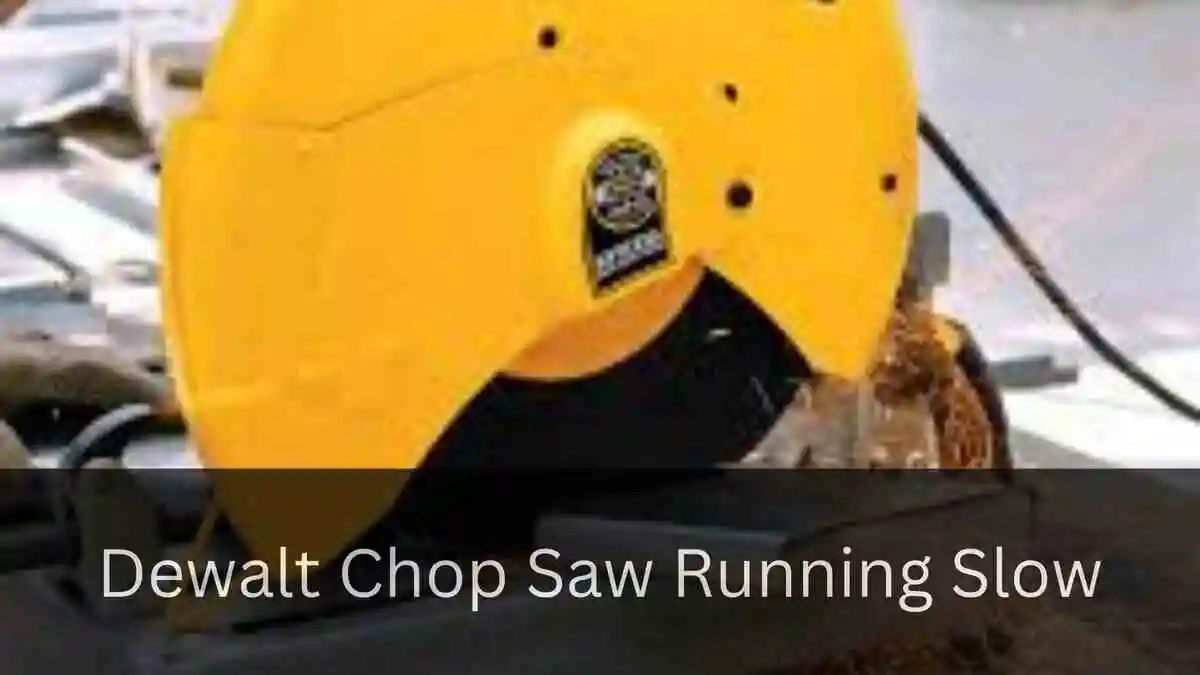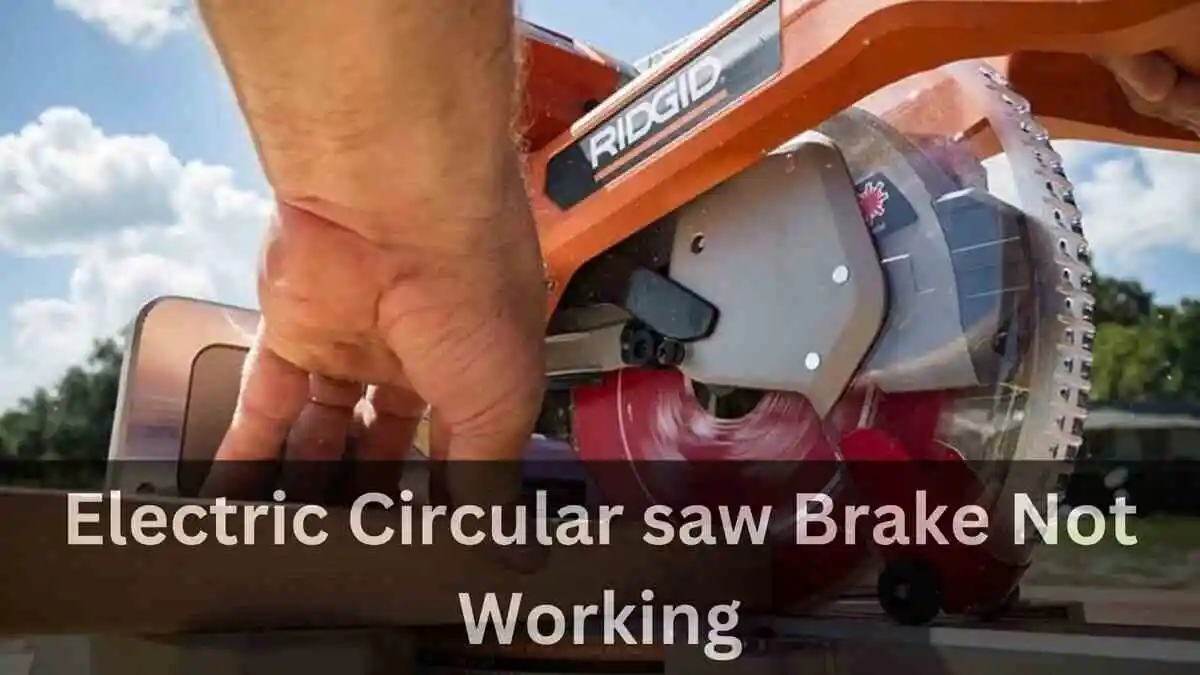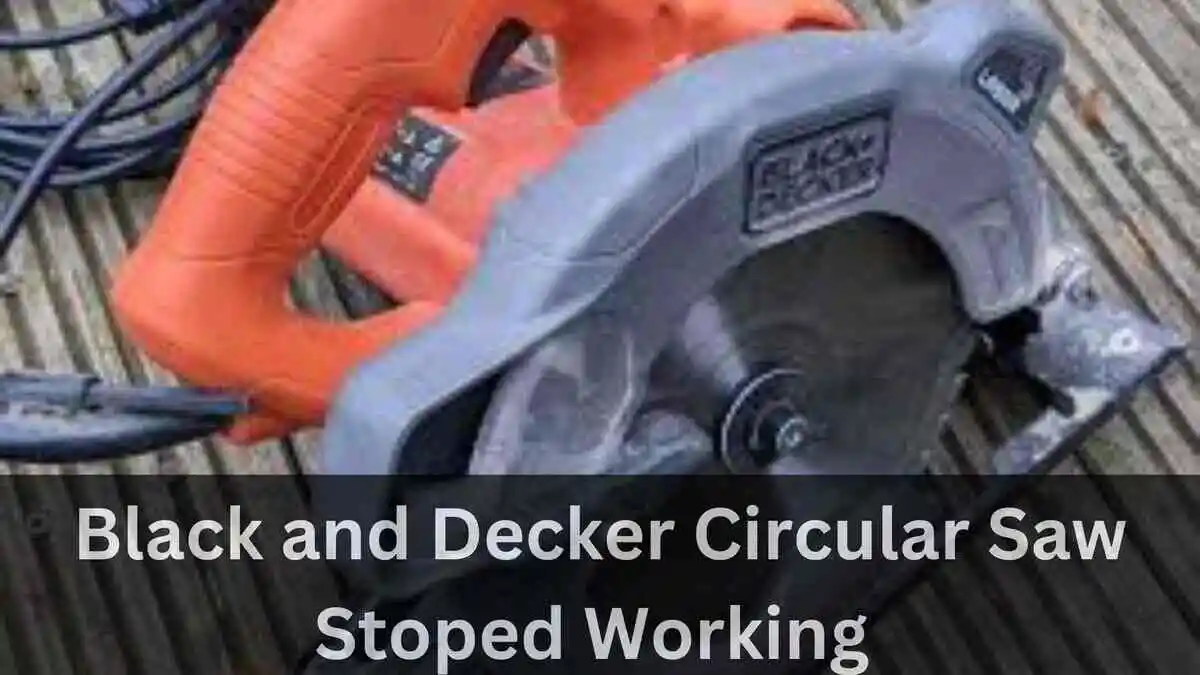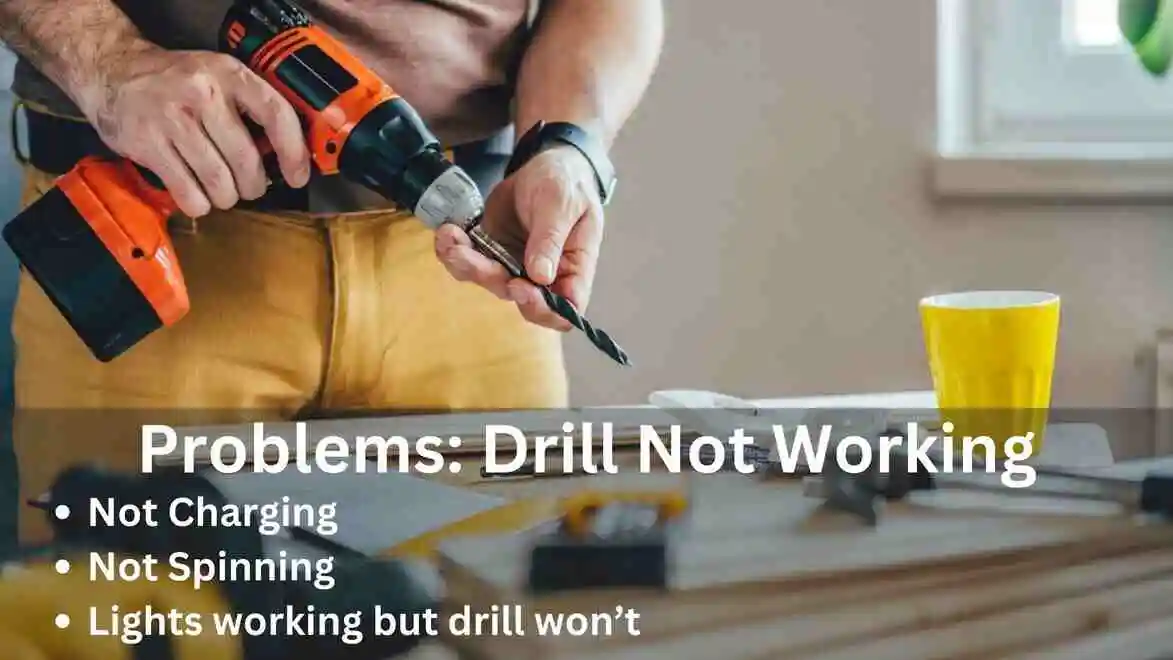Ryobi drills are renowned for their versatility and reliability, making them a staple in the toolkit of both professionals and DIY enthusiasts. However, like any power tool, they can encounter issues like: ryobi drill not working,
Ryobi drill problems that can hinder their performance. In this guide, we’ll explore some common Ryobi drill problems and provide step-by-step solutions to help you get your drill back in working order.
Few Things To Know:
Early Issues: If you’ve recently acquired your Ryobi drill and experiencing problems, it’s crucial to refer to the user manual for troubleshooting assistance, as some times problems may be caused by user error. If the issue persists and a refund policy is in effect, consider returning the drill within the specified return period.
If the return period has expired but the drill is still within its warranty coverage, it is advisable to avail of warranty services, if applicable.
Longevity: Ryobi drills typically have a lifespan of 8-14 months, depending on the price range, with an assumed usage of 26 hours per week. If you have exceeded this usage duration, it is recommended to look for purchasing a new drill.
Ryobi Drill Problems:
Here we have provided you with some ryobi drill troubleshooting.
1. Battery Not Charging:
If you find that your Ryobi drill’s battery is not charging, there is one thing to know, the Lithium-Ion battery embedded in the Ryobi drills has a finite lifespan. Consistent usage of the drill tends to expedite the wear and tear of the battery. Conversely, sporadic use or prolonged periods of inactivity may result in the battery losing its charge and efficacy. This issue, reflected in the Black and Decker drill’s failure to charge, can manifest as intermittent stops or unexpected starts.
To ascertain if a problem exists, initiate an examination of the battery. Begin by scrutinizing the battery and its connections. Additionally, verify the correct insertion of the battery into the drill, as improper placement can lead to sporadic drill stops.
If your are thinking why does my ryobi drill keep stopping, then check for battery; utilizing a multimeter, evaluate the battery voltage. A fully charged battery should exhibit a reading at least 1 volt higher than the specified voltage indicated on the battery label. For instance, if equipped with an 18-volt battery, it should register at 19 volts or beyond. Should the voltage reading equal or fall below the designated voltage on the battery, it is advisable to contemplate replacing the battery.
In the event that your drill battery is charged but non-operational, explore alternative potential causes listed below. However, if a faulty battery is suspected, consider procuring a replacement.
However if you have check this all and still thinking why is my ryobi drill not working with charged battery, then there can be other causes.
2. Chuck Dysfunction:
Another potential culprit for your drill’s non-performance may be a jammed chuck. It’s crucial to understand that an improperly fitted drill bit can hinder the drill’s rotation, often stemming from issues with the chuck. To address this, use two pliers to rotate the chuck in opposing directions until it loosens.
If required, contemplate the replacement of the drill chuck. Additionally, inspect the chuck key to ensure its proper functionality. If the key exhibits malfunctions, it might be essential to acquire a replacement for the drill chuck key.
3. Charging Hurdles:
Moreover, attempt an overnight charging session for the drill to ascertain if it resolves the issue. If the drill operates for a while and then halts, there could be two potential culprits: one related to the battery, as discussed earlier, and the other involving the charger, specifically a malfunctioning Black and Decker charger. Purchase a replacement charger if deemed necessary.
Two factors might impact the charger: it could be damaged or providing insufficient voltage. When facing charging issues, take a moment to inspect the charger. Ensure the charger cable is securely connected and undamaged. If the charging port on the drill isn’t the source of the problem, contemplate charger replacement after confirming the cable’s good condition.
If the cable seems undamaged, the issue might be with the charging port. Refer to a guide or seek professional assistance for replacing the charging port.
4. Not Turning On:
If you have inspected the charging problem as described above do check for ryobi drill trigger switch, if your rybi drill not turning on. The trigger acts as the gateway to your drill’s power. If battery-related issues have been ruled out, shift your focus to the trigger. If you notice that the trigger is pulled, yet the drill remains silent, the trigger might be the culprit.
For a more in-depth examination, to fix ryobi cordless drill not working, remove the battery and measure the resistance between its contacts while pressing the trigger. There should be some resistance, not excessively low or high. In case of a very high reading, scrutinize the trigger by disassembling the drill motor and checking the ohms through the trigger posts. It should read zero when pressed and infinite when not. If you prefer not to perform this detailed check, follow these steps:
To troubleshoot a malfunctioning trigger switch in your Black and Decker drill, follow these steps:
- Check the Trigger Lock: Ensure that the trigger lock is not engaged. If activated, unlock it by moving the lock to the open position.
- Inspect the Trigger: Confirm that the trigger is not stuck. If it is, release it by pressing the trigger button.
- Clean the Trigger Switch: Utilize a contact cleaner to remove any dirt or debris that might be causing the trigger switch issue.
- Test the Trigger Switch: Operate the trigger switch and listen for a distinct clicking sound. If the switch fails to engage or disengage properly, it may need replacement.
If cleaning the trigger switch doesn’t resolve the issue, consider replacing it. You can purchase a replacement switch mechanism and follow the manufacturer’s instructions for installation. Ensure you explore other potential solutions before opting for a new drill switch.
4. Motor Spinning Slowly / Torque Dilemmas:
If your drill is displaying sluggish spinning or encounters difficulty with lightweight materials, try tackling the issue by adjusting the torque settings. Rotate the ring positioned behind the chuck to a higher setting.
If this adjustment fails to resolve the problem, scrutinize the battery to ensure it is fully charged. A low battery level can contribute to sluggish drill performance.
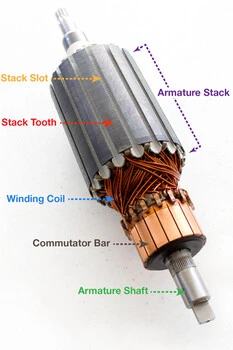
5. Addressing Armature Issues:
If your ryobi drill stopped workinggor encounters interruptions during spinning, a potential solution involves investigating the drill armature. The armature comprises a series of coils wound around an iron cylinder with magnets surrounding it (as illustrated in the image above).
Examine the armature to determine if it is loose inside the magnets. Additionally, scrutinize the condition of the coils around it. This can be assessed by observing any sparks or unusual smells during operation.
If issues with the armature are identified, seeking professional assistance is advisable. Professionals can re-wind the copper coils. Alternatively, if you possess the necessary knowledge, you may choose to undertake the re-winding process yourself, or opt to buy a new armature according to the voltage of your drill.
6. Addressing Broken Magnets:
The magnets in the drill’s armature are usually designed to last a lifetime, but there is a possibility that they may break. If your drill is not spinning, this issue could be linked to problems with the magnets or the entire armature.
Inspect the magnets on the drill armature to check for any breakage. If broken magnets are identified, it is recommended to purchase a complete armature replacement. This replacement should effectively address the issue and restore the proper functionality of the drill.
7. Addressing Carbon Brushes Wear:
When a drill machine stops functioning, various reasons could be causing the issue. One potential cause is the condition of the carbon brushes.
These brushes, resembling black rods positioned around the commutator bar, may wear out over time, resulting in reduced power or a complete failure of the drill.
If you observe signs of wear or damage in the carbon brushes, it is recommended to replace them with compatible ones to restore the drill’s performance.
Conclusion:
While Ryobi drills are known for their durability and performance, occasional issues may arise. The key to resolving these problems lies in systematic troubleshooting and, when necessary, seeking professional assistance.
Whether it’s a battery-related issue, a motor problem, or a malfunctioning trigger, the solutions are often within reach, ensuring your Ryobi drill continues to serve you faithfully for years to come.
If none of the solutions mentioned above work, don’t hesitate to consult a professional or contact the manufacturer for expert guidance. Your trusted Ryobi drill can be back in action with the right approach to problem-solving.
